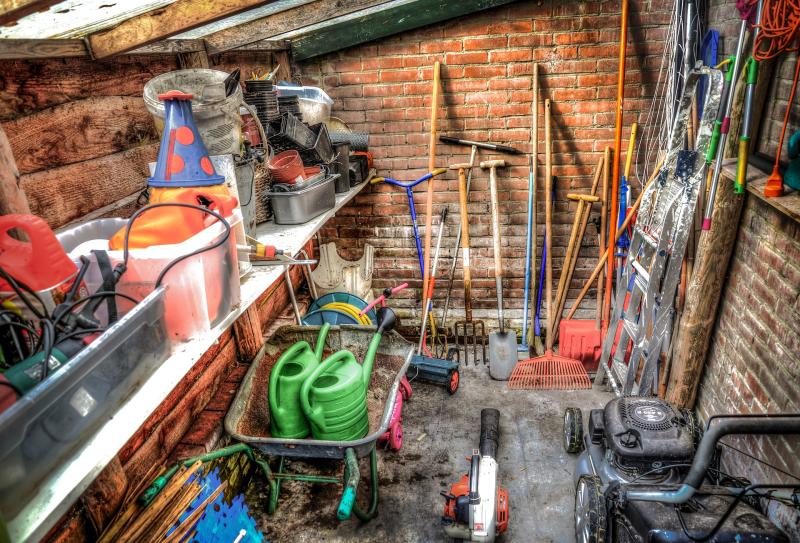Sarah Browning, Nebraska Extension Educator

From trowels to tillers, gardening equipment will last longer and do a better job with preventive maintenance each fall. Image from Pixabay.com.
From trowels to tillers, gardening equipment will last longer and do a better job for you if you spend some time on preventive maintenance each fall. Getting tools in tiptop condition now also means they'll be ready to use when the gardening bug bites next spring.
Power Equipment
The owner's manual on your garden tractor, lawn mower, tiller or other power equipment is usually your best guide for winterization. Generally, however, the main steps include the following:
- Clean equipment to remove oil, dirt and accumulate grass clippings or other debris.
- Drain the fuel tank and engine of gasoline. Or just start the engine and let it run until it stops.
- Change the oil.
- Clean and sharpen the blade.
- Adjust and lubricate moving parts as needed.
- Clean or replace the air filter. Also remove the spark plug and place a teaspoon of clean oil in the cylinder. Then turn the engine over with the starter so the oil lubricates the cylinder walls and valves. This protects against rust. Replace the old spark plug or buy a new one and install it. Clean the tops of the batteries and store them where they won't freeze.
Chainsaws and other engine-driven equipment that will be used during winter should be drained and refueled in late fall with winter-grade gasoline.
Order parts that you'll need in spring, and tape or tie them to the equipment so they won't get lost. If you store them elsewhere, write a note to yourself and tape or tie it to the equipment to remind yourself of what needs to be done and where the parts are stored.
Hand Tools and Sprayers
Hand tools used to work the soil should be cleaned before storage. Remove the soil from metal parts and wipe them with an oily rag. Check for any loose screws or nuts and tighten them. Replace weak, damaged or broken handles. Wood handles and wood ladders can be treated with a wood preservative made from 1 part linseed oil and 2 parts paint thinner applied with a brush. Store tools where they won't be exposed to dampness.
Drain garden hoses before storing. Store them coiled up and laying flat, or draped over hose supports or reels. Don't allow them to hang on a nail, or lie on the ground with several kinks. Kinks or sharp bends create weak areas in the hose, that make using the hose difficult and often crack in the future.
Hedge trimmers and other pruning tools are often sticky with pitch and sap by the end of the growing season. A rag dipped in paint thinner will clean them. After cleaning, sharpen and oil tools before storing them.
Garden sprayers, dusters and fertilizer spreaders also need thorough cleaning so that chemicals don't clog moving parts or nozzles. Dry fertilizers left in a spreader will absorb water, which will contribute to rust and general deterioration. Wash the fertilizer spreader out, allowing any residual fertilizer to soak into the lawns then set it out to dry. After emptying and cleaning equipment, lubricate moving parts and rub rust-prone metal with an oily rag before storing.
University of Nebraska-Lincoln Extension in Lancaster County is your on-line yard and garden educational resource. The information on this Web site is valid for residents of southeastern Nebraska. It may or may not apply in your area. If you live outside southeastern Nebraska, visit your local Extension office.